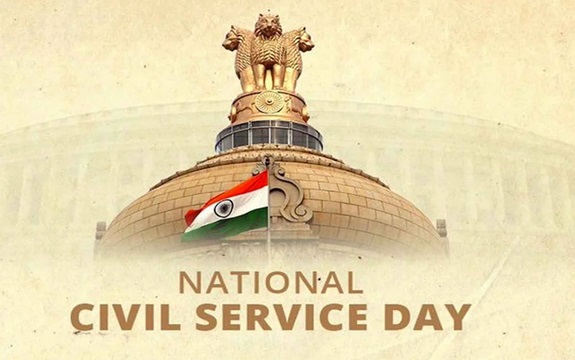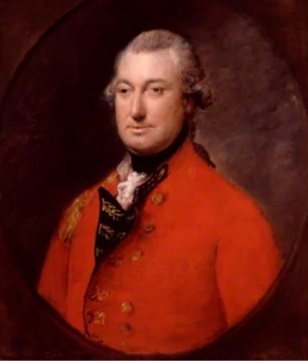
- National Civil Services Day is observed every year on April 21.
- This day is dedicated to honouring the contributions of civil servants, who are considered the backbone of India's administrative system, and to reaffirm their responsibilities.
- It is not only a day to appreciate the work of civil servants but also to inspire them to play a more impactful role in nation-building.
Why is Civil Services Day Celebrated?

- The historical significance of this day is linked to April 21, 1947, when Sardar Vallabhbhai Patel addressed the first batch of civil services probationers at Metcalfe House, Delhi.
- He referred to civil servants as the "Steel Frame of India" and emphasized their foundational role in the country’s administrative structure.
- In his historic speech, Sardar Patel urged civil servants to remain above political pressures and to perform their duties with impartiality, integrity, and transparency.
- Hence, April 21 was chosen as National Civil Services Day.
- The day was formally celebrated for the first time in 2006 by the Government of India at Vigyan Bhawan, New Delhi, marking the beginning of an annual tradition.
Objectives and Significance
- The primary objectives of observing National Civil Services Day are:
- Appreciation of Civil Servants' Work: Recognizing officials who have made significant contributions to public service through innovation, transparency, and efficiency.
- Self-reflection and Motivation: Providing civil servants an opportunity to review their responsibilities and rededicate themselves to public service.
- Promoting Excellence in Public Administration: Encouraging innovation, reform, and a sense of accountability in the administrative services.
- Reviewing Policies and Programs: Assessing the implementation of government schemes and the role of civil servants in their execution.
History of Indian Civil Services
Administrative Systems in Ancient India
- Religious and Philosophical Texts
- Texts like Manusmriti and Kautilya’s Arthashastra mention governance, administrative structures, appointments of officers, and their duties.
- Emphasis was laid on justice, tax collection, public welfare, and punishment policies.
- Mahabharata and Ramayana
- These epics highlight ideals of statecraft, justice, and governance.
- The king was regarded as a protector of the people and an upholder of moral values.
- Mauryan Administration (322–185 BCE)
- Kautilya’s Arthashastra outlines a detailed administrative framework.
- Emperor Ashoka appointed officers like Rajukas, Mahamatras, and Yuktas responsible for justice, tax collection, welfare, and state supervision.
- Ashokan inscriptions refer to Dhamma Niti, emphasizing morality and public good in governance.
- Gupta Administration (319–550 CE)
- A trend of decentralization was observed during this era.
- Positions like Uparika, Vishayapati, Nagarpati, and Gramik were in charge of various administrative levels.
- Local administration was empowered, making governance more organized.
Medieval India
- Southern Kingdoms
- Empires like Cholas, Cheras, Pandyas, and Vijayanagara had well-organized administrative systems.
- The Chola period witnessed the development of an advanced local self-government system, with village assemblies (Ur, Sabha, Nagaram) involved in tax collection, justice, and development.
- Chhatrapati Shivaji Maharaj's Administration
- Shivaji established a structured system called Ashtapradhan Mandal, comprising eight ministers responsible for different departments:
- Peshwa, Amatya, Sumant, Sachiv, Panditrao, Senapati, Nayak, Nyayadhish
- Administrative hierarchy:
- Swarajya (Central Administration) → Province → Division → Pargana → Subdivision → Village
- The village was the smallest administrative unit, governed by a Gram Sabha.
- Mughal Administration
- The Mughal Empire had a structured administrative system:
- Mansabdari system, division of empire into Subahs (provinces) and Sarkars (districts).
- Separate departments for judiciary, police, and revenue.
- Todar Mal’s revenue reforms are considered a landmark in fiscal policy.
Modern Civil Services in British India
Lord Cornwallis: Father of Indian Civil Service

- Lord Cornwallis, Governor-General of Bengal (1786–1793), is regarded as the Father of Indian Civil Services.
- He introduced discipline and organization in administration.
- Anti-corruption reforms included banning private trade and strict rules against bribes and gifts.
- He laid the foundation for recruiting honest and accountable officers.
- Key Reforms by Cornwallis
- Introduced merit-based recruitment, reducing favouritism and nepotism.
- Fixed salaries for civil servants to curb corruption.
- Established ethical standards for officials, enhancing accountability and transparency.
Lord Wellesley and Establishment of Training Institutions
- Lord Wellesley (Governor-General from 1798–1805) initiated training for civil servants.
- In 1800, he established Fort William College in India for administrative training.
- Later, due to criticism from the Court of Directors, Haileybury College was founded in England in 1806, which became the main training centre for ICS officers.
Charter Act of 1853: Competitive Examinations Begin
- The Charter Act of 1853 brought major changes.
- It ended the patronage system and introduced open competitive examinations for recruitment.
- Though open to Indians, the exam was held in England and conducted in English, posing a major barrier for Indian candidates.
Civil Services Act, 1861 and Early Challenges
- Formalized the civil services exam in England with a curriculum based on classical languages like Greek and Latin.
- The age limit was frequently reduced, making it harder for Indians.
- Despite challenges, Satyendranath Tagore became the first Indian to qualify in 1863.
Statutory Civil Service (1878–1879)
- Introduced by Lord Lytton, this service aimed to increase Indian participation.
- One-sixth of the posts were to be filled by wealthy Indians nominated by local governments and approved by the Viceroy and Secretary of State.
Aitchison Committee (1886): Classification of Services
- Recommended a three-tier structure:
- Imperial Civil Service (ICS) – Exams in England
- Provincial Civil Service – Exams in India
- Subordinate Civil Service – Exams in India
- Suggested removing contract-based appointments and raising the age limit to 23 years.
Montford Reforms (1919): Exams in India Too
- Proposed conducting ICS exams in both India and England.
- One-third of recruitment to be done in India, increasing annually by 1.5%.
- This provided more opportunities to Indian youth.
- Lee Commission (1924): Recruitment Equality & PSC
- Recommended 50:50 recruitment ratio between Indians and Europeans, to be achieved in 15 years.
- Suggested Provincial Governments recruit for education and transferred subjects, while essential services remain under the Secretary of State.
- Most importantly, recommended establishing a Public Service Commission (PSC) to ensure professional and impartial recruitment.
Government of India Act, 1935
- Gave civil service the status of a “protected service.”
- Established the Federal Public Service Commission, now known as UPSC.
- Introduced clarity and balance between centralized and decentralized recruitment.
From Commerce to Administration
- Initially, civil services were meant to support commercial functions of the East India Company.
- Over time, with territorial expansion, civil servants began handling administrative functions and governance.
Colonial Nature of Civil Service and its Legacy
- During British rule, the civil service primarily protected colonial interests and ensured revenue collection.
- However, values like merit, efficiency, and ethics in its structure were retained post-independence, forming the foundation of the modern Indian Administrative System.
Reorganization after Independence
- The Constitution makers retained civil services as a non-political, impartial, and competent institution.
- Created All India Services like IAS, IPS, and IFS.
- These services aimed to assist the government in policy implementation and serve the public interest.
Role of Civil Servants
- Civil servants in India not only implement policies but also help in policymaking, decision-making, and resolving grassroots issues.
- Their roles include:
- Administrative management
- Implementation of development schemes
- Maintaining law and order
- Disaster management
- Ensuring delivery of citizen services
- In today’s era of digital governance, civil servants must be technically adept, accountable, and citizen-centric.
Challenges
- Despite their critical role, civil servants face several challenges:
- Political interference and pressure
- Threat of corruption
- Complexity of the administrative framework
- Barriers to innovation
- Increasing public expectations
- Addressing these challenges requires strong ethics, continuous training, and effective leadership.



